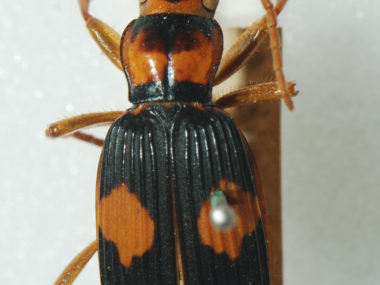Unlike a created kind, an “ark kind” is a group of animals belonging to the same created kind represented on Noah’s Ark during the global Flood described in Genesis 6-9. European explorers of the 16th and 17th centuries quickly found out that the world was full of more species than were known from their homeland, while hybridization research led by 18th-century biologist Carl Linnaeus and others indicated that many of our modern species arose from a relatively small number of ark kinds1. Seeing as each ark kind was represented by at least two individuals (14 in some cases), how much of our present biodiversity was represented on the Ark? In recent years, creation scientists have developed a variety of criteria and methods, such as hybridization and statistical baraminology. These have turned out to be quite useful in identifying ark kinds.
The following is a summary of “Mammal kinds: how many were on the Ark” by Kurt Wise, and of the surrounding discussion and research pertaining to it. The views expressed are not necessarily those of New Creation.
Using the Fossil Record
In 2008, paleontologist Kurt Wise proposed using the patterns of species’ first appearance in the post-Flood fossil record. This information could help creationists establish ark kinds. Based on the percentage of living species that have a fossil record, he determined that the fossil record was likely to preserve virtually the full spectrum of life alive at any one time in earth history.
Despite this, many modern species like hippopotamus, zebras, polar bears and sperm whales do not appear until quite late in the post-Flood fossil record2. Dr. Wise suggests that these species were not alive at the time of the Flood. Instead, he thinks these are species that arose from a much more inclusive ark kind. “In taxa with a sufficiently complete fossil record, then, the lowest taxonomic level with a fossil record reaching back to Flood sediments for a particular set of organisms identifies the ark kind and its taxonomic level.” This was the reasoning behind Dr. Wise’s proposal: the Post-Flood Continuity Criterion (PFCC).
Dr. Wise applied this criterion to mammals and determined that only 100-300 mammal kinds were present on the Ark. Ironically, many of the species commonly portrayed as Ark passengers would not exist at the time. Zebras don’t appear until just before the post-Flood Ice Age, which Wise estimates occurred hundreds of years after the Flood. This makes sense because zebras diversified from earlier members of the horse kind. Hippopotamus would not have been aboard Noah’s Ark either. They seem to belong to the same ark kind as a now-extinct family of pig-like mammals called the anthracotheres. Interestingly, these and many other of Dr. Wise’s results are confirmed by prior hybridization, statistical baraminology research performed by other creationists to determine ark kinds.
Marine Fossils
Marine animals are the most well-represented organisms in the Flood-derived fossil record. It is curious, then, that none of the fossil records for modern marine whales, dolphins, manatees, and dugongs extend back to the Flood. In fact, these groups do not appear in the fossil record until quite sometime later. Based on PFCC, this strongly suggests that these groups did not exist before the Flood. The fossil discoveries of “legged whales,” like Peregocetus, and manatee relatives, like Pezosiren, further support this. In addition, there is the presence of diminutive hips and leg bones in modern whales. It is quite possible that modern whales and manatees belong to semi-aquatic or semi-terrestrial ark kinds that only adopted an aquatic lifestyle sometime after the Flood.
Mystery of the Kinds
Some of Dr. Wise’s results were headscratchers. For example, creationists have long argued that the bear family is an ark kind. Bear fossils do not appear in the fossil record until about a quarter of the way between the Flood and Ice Age, however. PFCC suggests, then, that bears and other caniformia species (e.g. dogs, skunks, and sea lions) share the same ark kind. This contradicts previous and further research. Unlike the case with whales and manatees, there are currently no intermediate forms or evolutionary fossil series suggesting that a single ark kind gave rise to these groups.
Future research is needed to resolve the differences between Wise’s results and those of other scientists. It will have to involve an in-depth examination of the completeness of the post-Flood fossil record. It is also necessary to further evaluate ark kinds research using other criteria. Nevertheless, PFCC has shown that the earliest of post-Flood rock layers did preserve the most modern taxonomic mammal families. This fits well with the creationist prediction that the ark kind is roughly equivalent to the family rank.
Footnotes
- The placement of the Flood/post-Flood boundary within the geologic column has been extensively debated among creation scientists for decades. Based on criteria developed by Dr. John Whitmore and Paul Garner, it is likely at or around the K-Pg boundary. Please see: “Whitmore, John H. and Garner, Paul (2008) “Using Suites of Criteria to Recognize Pre-Flood, Flood, and Post-Flood Strata in the Rock Record with Application to Wyoming (USA),” The Proceedings of the International Conference on Creationism, 6 , Article 35.” ↩︎
- Wise KP. “Mammal kinds: how many were on the Ark,” CORE Issues Creat. 2009, 5, 129–61. ↩︎












Amen. There was no marine mammals before the flood. in fact i say there is nop such division in nature as mammals. Thats a human myth. There are just created kinds and coincidence if they have like traits for like needs. People are not mammals not anything else. We today are only looking at a spectrum of varity in kinds with certain members still here. So beatrs, seals, wolves, marsupial wolves, are the same kind and more. There was never that many kinds. Wise is a creationist that likely will be seen as a innovative leader in doing a better job in classification of biology in the future. finally whales are seen as critters from the ark. Finally.
Hi Ryan,
I am a surprised to read that you believe that extant whales evolved from “legged whales”, like Peregocetus. I have read most of the published data (original papers) on whale evolution and found the evidence to be more consistent with the idea that the so called walking whales and extant whales are distinct kinds.
There are so many new features that are needed to turn a creature like Peregocetus into a baleen whale. The only thing that links the two are some of the features of the ear bones.
Also I am surprised to read the unequivocal acceptance of evolutionist claims that extant whales have diminutive hips and leg bones. I believe that the actual evidence is not consistent with that claim.
Hello Marc,
We don’t believe that the “walking whales” (archaeocetes) evolved into modern whales, per se. Rather, we accept it as one of two viable models to explain the fossil record of cetaceans, the other being based on their post-Flood ecology. We have an article in the works that discusses this topic in detail. So stay tuned! 🙂
I’ve just recently discovered this site, and find it interesting reading. However, I do not understand how anyone could think that bears, skunks, dogs and sea lions could have come from a common ark ancestor. Maybe dog fossils are not found in the “Flood strata” because the boundary is drawn too low. Fossilization requires quick burial in mineral rich, water saturated mud. How would Postflood fossils even form? Where did the sediment come from? How did the organisms get quickly buried? Mammals swim. Some can also climb on floating logs… mammals should have been the last to die and thus be the last to get buried during the Flood and thus would be in the top strata. Move up the boundary and you will see that animals have been reproducing after their kind (cat kind, dog kind, hippo kind, rabbit kind, elephant kind…)since the day of their creation by God.